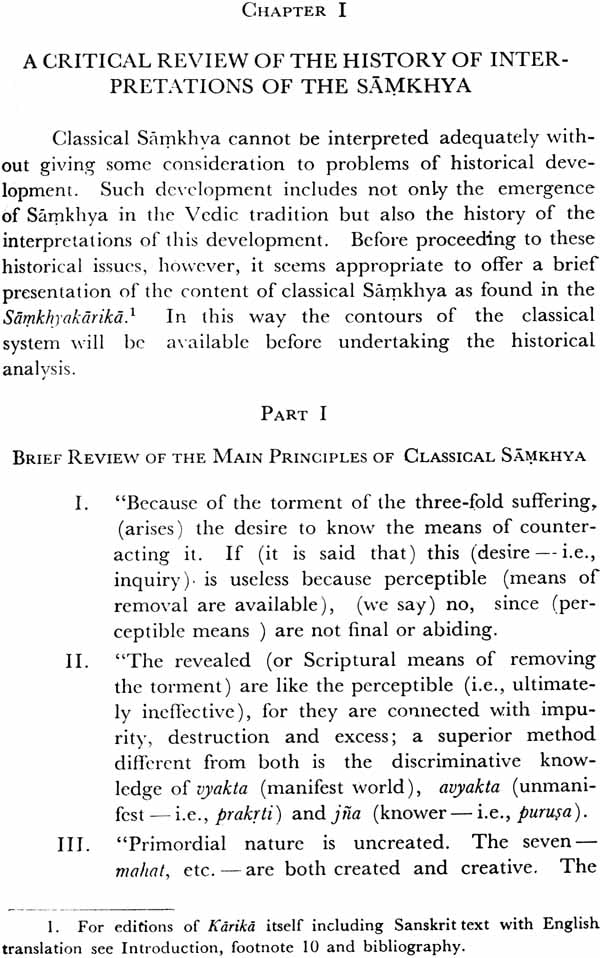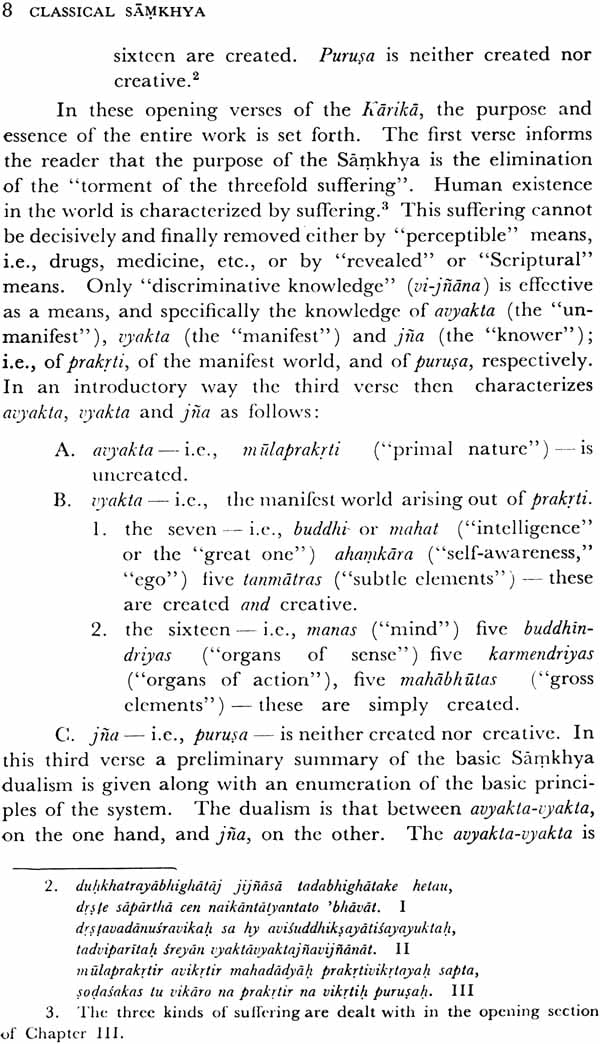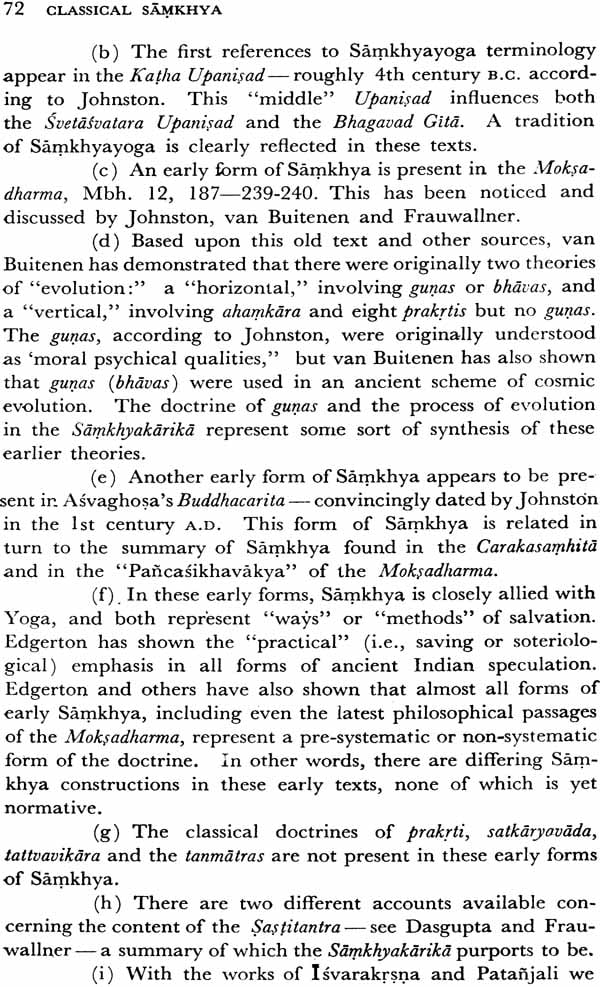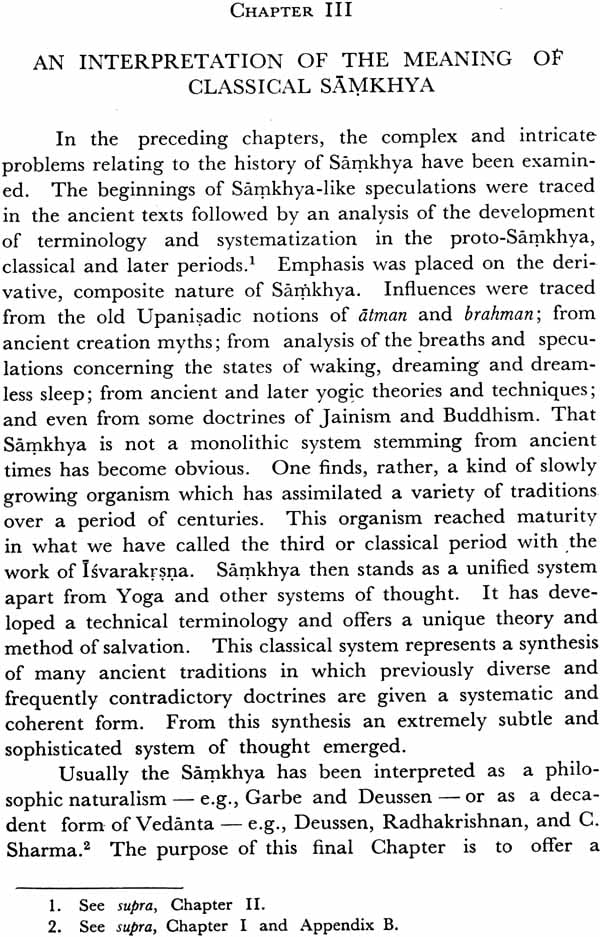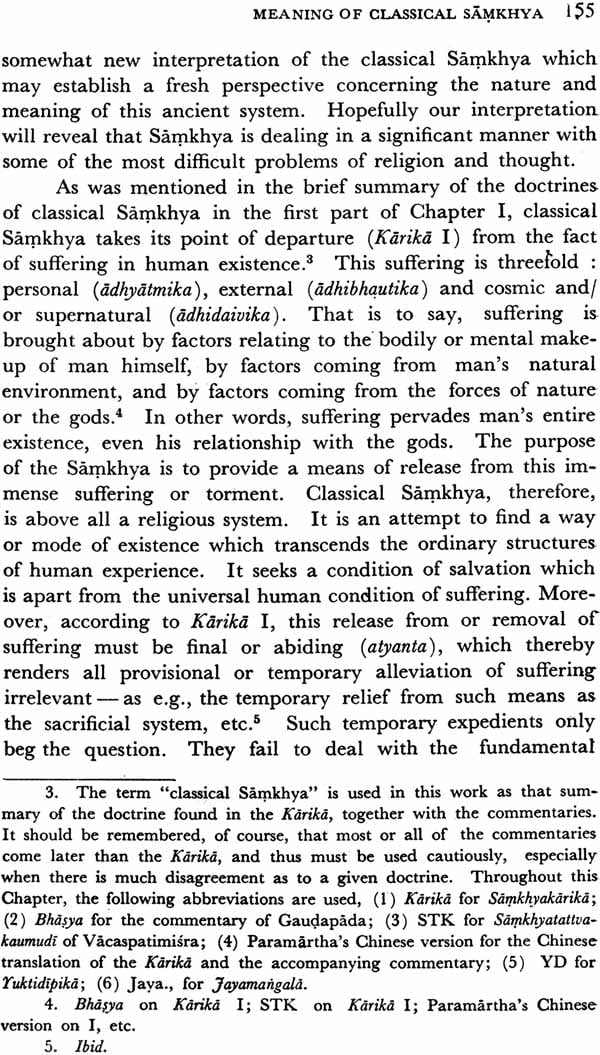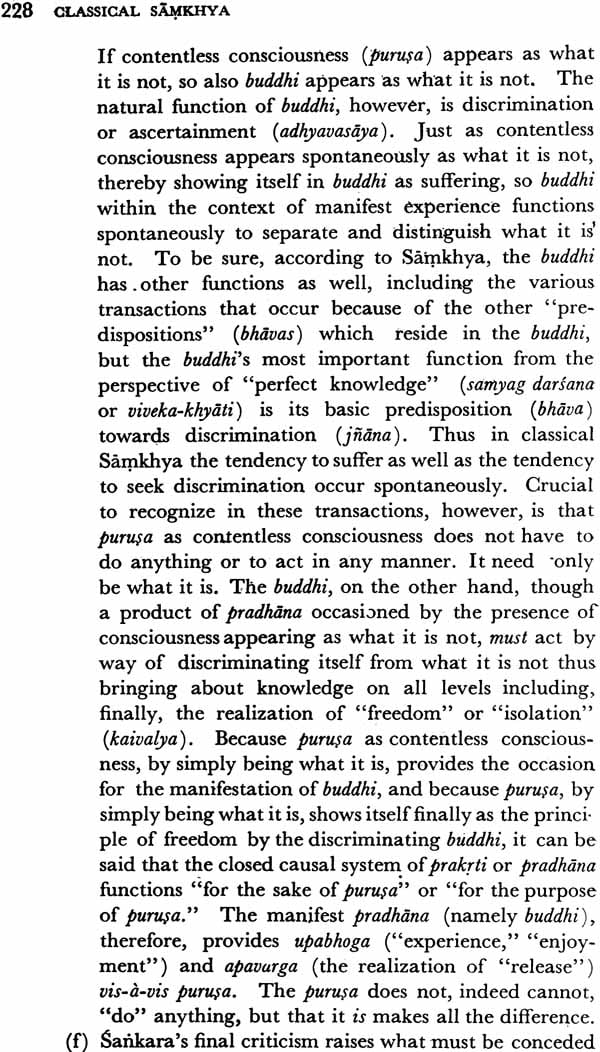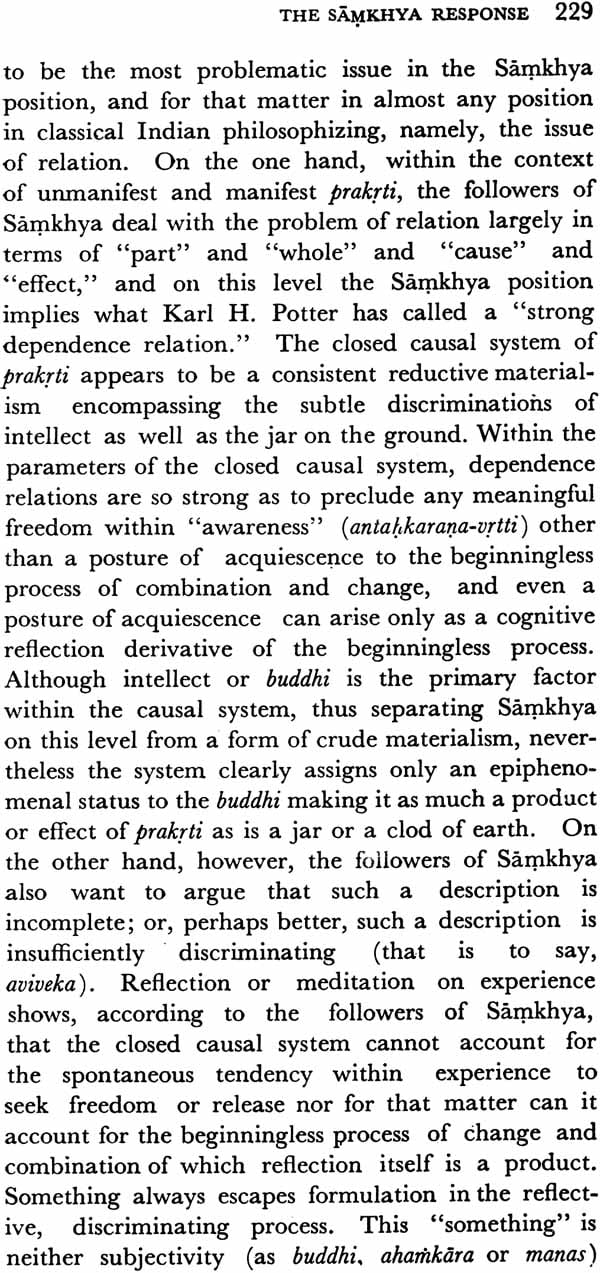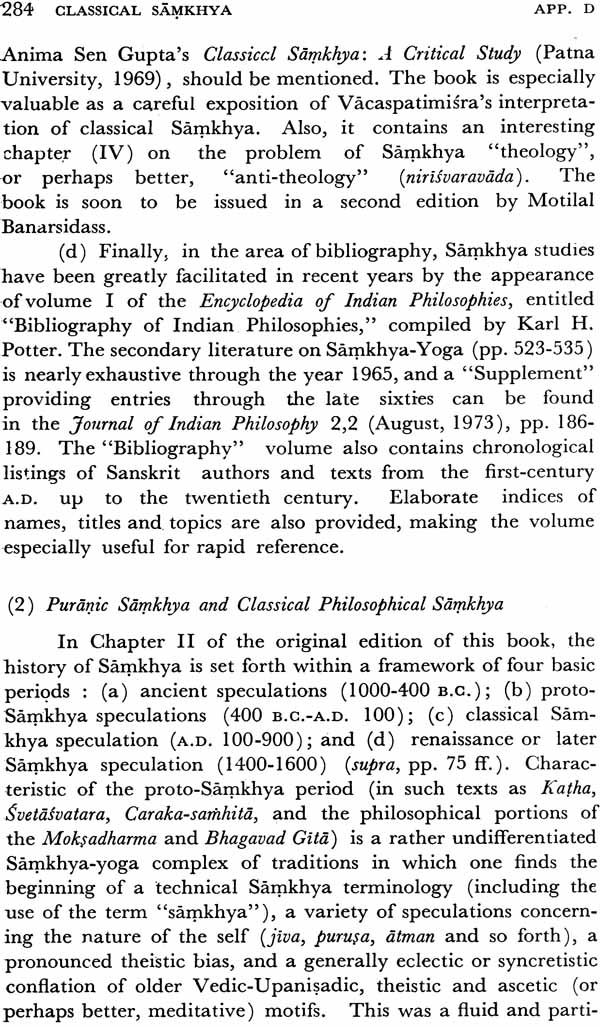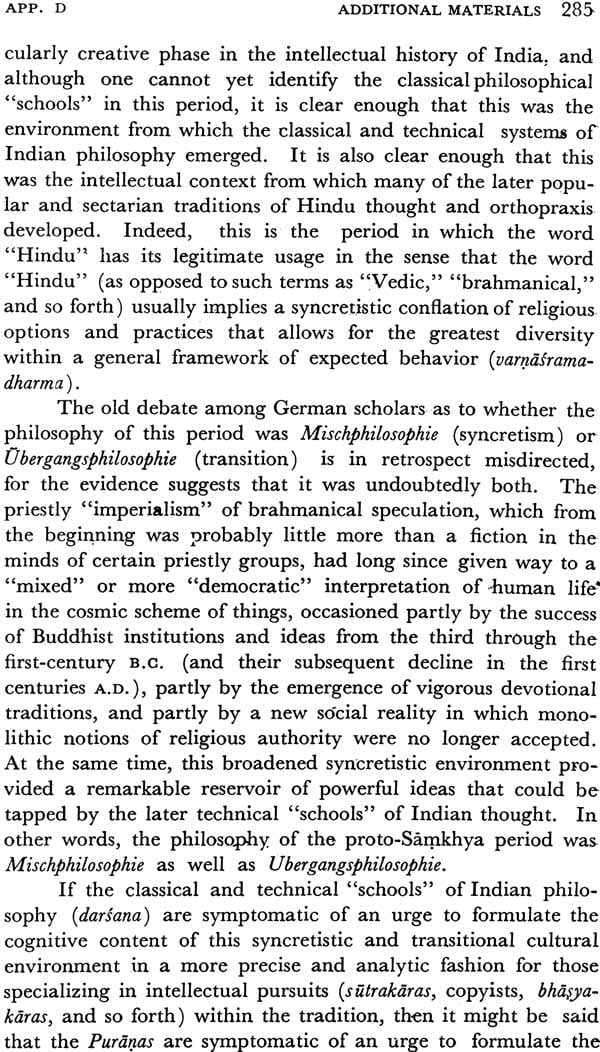
Classical Samkhya An Interpretation of its History and Meaning
Book Specification
| Item Code: | IDD356 |
| Author: | Gerald James Larson |
| Publisher: | MOTILAL BANARSIDASS PUBLISHERS PVT. LTD. |
| Language: | English |
| Edition: | 2017 |
| ISBN: | 9788120805033 |
| Pages: | 332 |
| Cover: | Paperback |
| Other Details | 8.5" x 5.5" |
| Weight | 420 gm |
Book Description
About the Book
The tradition of Samkhya is one of the oldest and most influential in the intellectual history of India. The fundamental notions of Samkhya namely prakrti, purusa, buddhi, ahamkara, manas and the three gunas, provided the conceptual framework in which much of Indian philosophizing occurred, and the classical formulations of Yoga and Vedanta together with many traditions of Buddhist philosophy and meditation developed vis-a-vis the intellectual perspective of the Samkhya. Similarly on a general cultural level the influence of Samkhya was profound and important over many centuries in such areas as law, medicine, ancient science and mathematics, logic, mythology, cosmology and ritual.
This second edition of Classical Samkhya traces the history of the Samkhya not only in the Indian intellectual tradition but also in the traditions of historical criticism. The book also offers a new interpretation of the philosophical significance of the Samkhya with special reference to the classical interpretation of the interaction of prakrti and purusa.
For the second edition the author has also included a Chart of the Twenty-five Basic Principles of the Samkhya, a Glossary of Samkhya Terminology, an additional Appendix which surveys recent scholarly work in the area of Samkhya together with a discussion of Samkhya in the Purana-s and a revised Bibliography.
About the Author
Gerald James Larson is Rabindranath Tagore Professor of Indian Cultures and Civilizations, and Director of the India Studies Program at Indiana University, Bloomington, USA. Professor Larson's area of specialization is South Asian philosophy and religion. He is the author of numerous books and articles on Indian thought. His most recent book is India's Agony Over Religion (State University of New York Press, 1995, and Oxford University Press, Delhi, 1997).
Excerpts from reviews:
The term "Classical Samkhya" refers to the Samkhya doctrine as expounded in the "Samkhyakarika" of Isvarakrsna, together with the commentaries thereon. Author's own interpretation of the Karika's is given in a separate chapter. The original text of Samkhyakarika in Roman script together with a nice translation is given in an appendix. Glossary of technical terms, chronological chart, bibliography and index make the work a highly useful one both to the Western and Eastern students of philosophy and research scholars as well to whom in particular this will serve as a guidance for further studies.
B. Kutumba Rao
Triveni, July-September, 1984
Gerald Larson has here attempted to reconstruct and reinterpret the history and meaning of classical Samkhya. the special contribution of the book consists in showing Samkhya as a system of religious thought which seeks to understand the world and man's place in the world from the perspective of the fact of consciousness. The author rightly argues that the dualism between consciousness and the world is fundamental. A useful inclusion in this edition of the book is the glossary of Samkhya terminology. The work is a useful addition to the growing literature on Indian thought in general and on the systems other than Vedanta in particular.
The Weekly-Madras,
October 28, 1979
Contents:
Preface to the Second Edition
Preface
Abbreviation
CHAPTER
Introduction
I. A Critical Review of the History of Interpretations of the Samkhya
Brief Exposition of the Principles of Classical Samkhya
Critical Review of Interpretations
Richard Garbe
Joseph Dahlmann
Paul Oltramare
Hermann Oldenberg
A.B. Keith
Franklin Edgerton
Surendranath Dasgupta
E.H. Johnston
Erich Frauwallner
J.A.B. van Buitenen
J.W. Hauer
Mircea Eliade
Debiprasad Chattopadhyaya
K.C. Bhattacharya
Other Contributions
Conclusions
II. An Interpretation of the Historical Development of Classical Samkhya
Ancient Speculations
Proto-Samkhya Speculations
Classical Samkhya
Renaissance or Later Samkhya
III. An Interpretation of the Meaning of Classical Samkhya
The Means of Knowledge
prakrti, gunas and satkaryavada
purusa
Association and Interaction of prakrti and purusa
Emergence and Functioning of the tatt
Discrimination and Release
Conclusions and Final Evaluation
Epilogue : Sankara's Criticism of Samkhya and the Samkhya Response
A Chart of the Twenty-five Principles of Classical Samkhya
Glossary
Appendix A. Chronological Chart
Appendix B. The Samkhyakarika of Isvarakrsna
Appendix C. A Modern Tradition of Samkhyayoga
Appendix D. Additional Materials for the Study of the History and Meaning of Classical Samkhya since the First edition
Bibliography
Index
